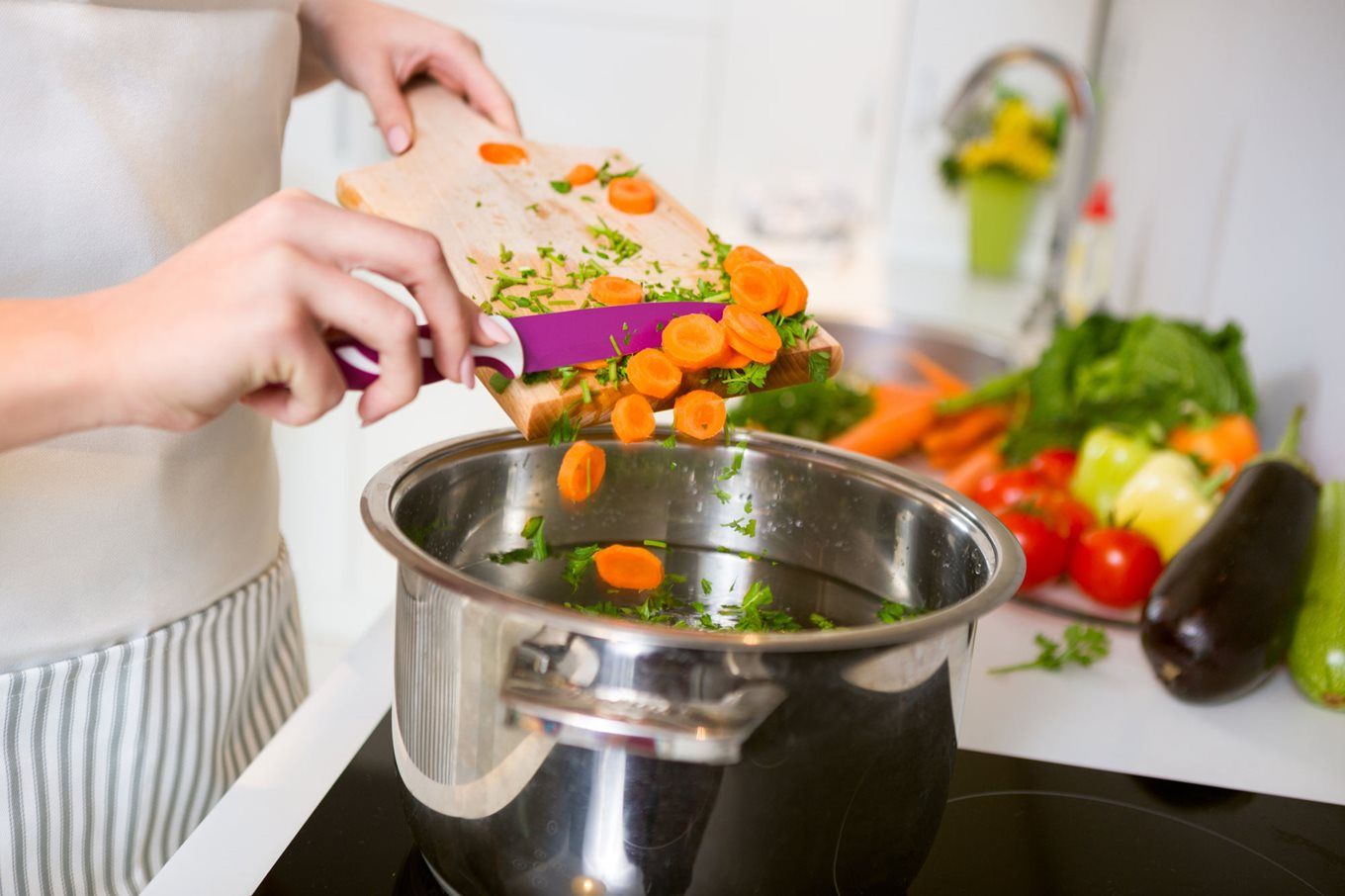WHEN vegetables are cooked in certain conditions this can have an impact on nutritional quality of the final product. This is true of the B and C group vitamins which can be reduced or destroyed.
Vitamins B and C dissolve in water, meaning if vegetables are cooked in water by blanching or boiling most of these vitamins will be lost when the water is thrown out. It’s a different story if your final dish is soup where the liquid containing the vitamins is consumed as part of the dish.
You can retain more of the B and C vitamins in vegetables if you steam or microwave because none of the vitamins are thrown out. Nevertheless, vitamin C is heat sensitive and microwaving seems to be the best method for retaining more of the goodness when cooking vegetables.
Vitamin C is also destroyed by air so any peeled fruit or vegetables shouldn’t be left sitting around without being covered for later use. Cling film is a good idea here.
On the flip side of cooking effects on vitamins B and C, cooking vegetables can increase levels of vitamin E and K, especially in the green ones. Another important point to consider is that sautéeing and oven baking can increase flavonol content, lowering the risk of disease. This is particularly the case with onions, with boiling having a positive effect in, say for example, onion soup.
When considering cooking your vegetables, you have to be strategic when thinking about which vitamins and/or nutrients you are looking to achieve in optimal amounts.
Lee McCusker (BA; MSc; MSc; MSc; ANutr; SENr) is a registered nutritionist from Belfast and can be found on Facebook, Instagram and Twitter. Email: attentivenutrition@
gmail.com








